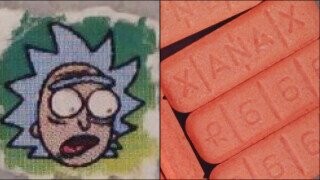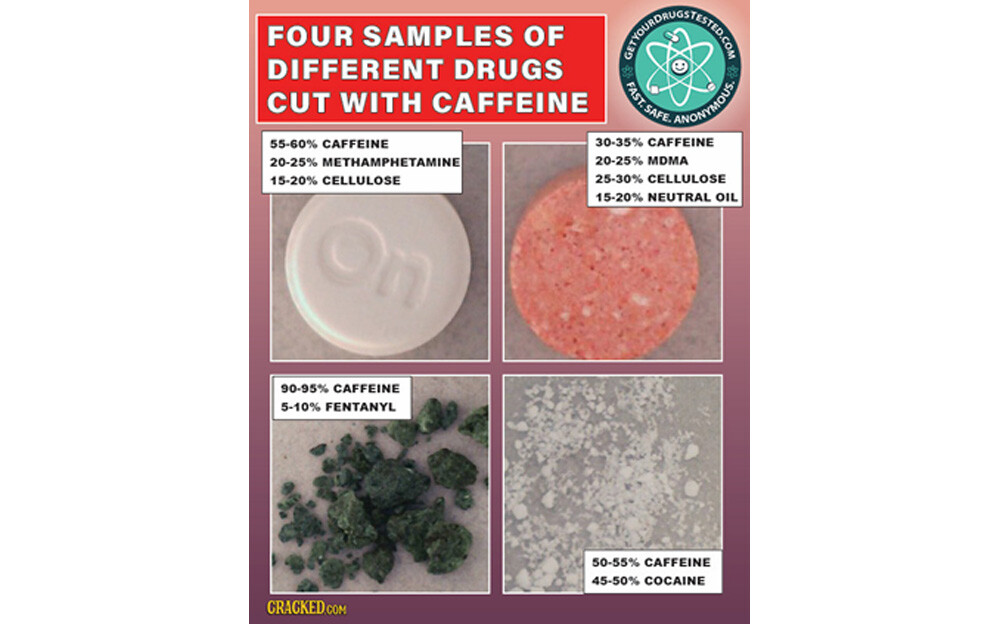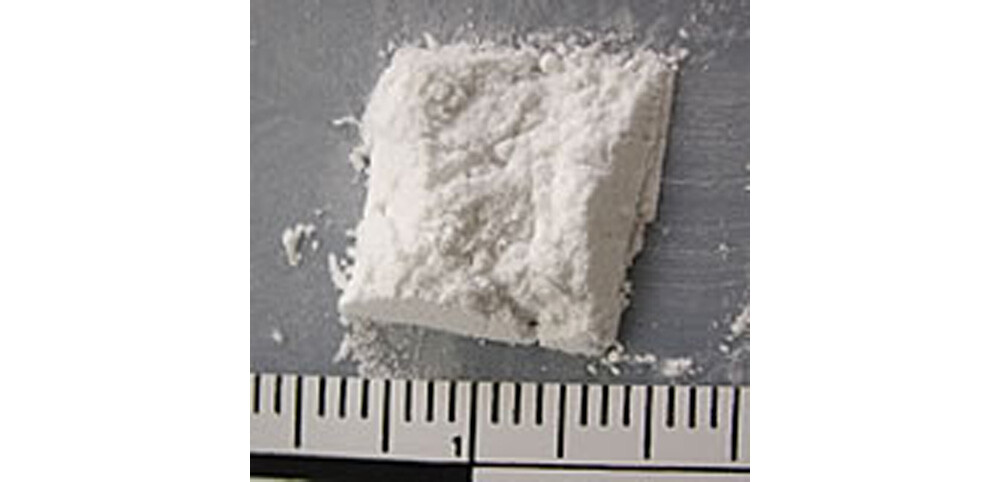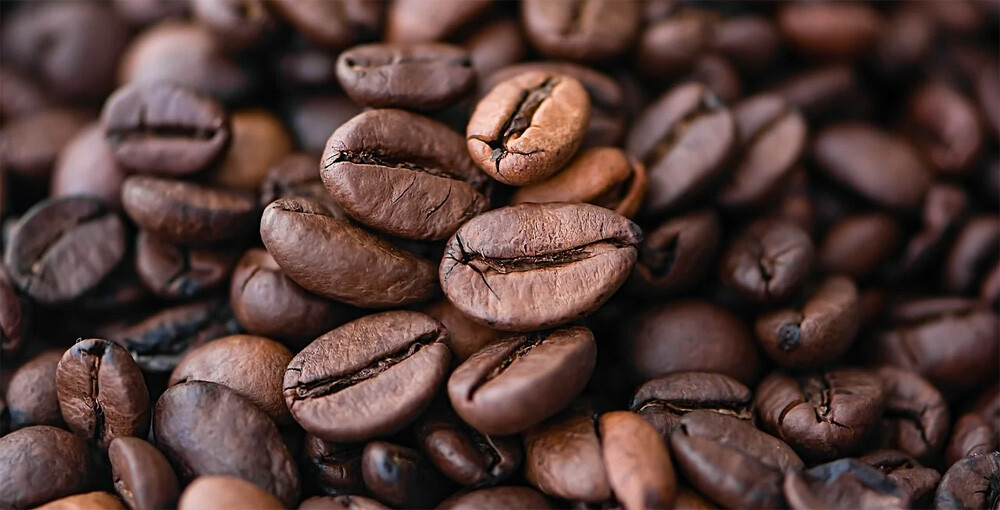5 Wild Things I Learned Analyzing 23,000 Illegal Drugs

I founded a community program called Get Your Drugs Tested in my hometown of Vancouver, Canada. We have a storefront where anyone can come and get their drugs analyzed for free, plus we also accept samples by mail. We pay for it all with revenue from our medicinal cannabis dispensary, one of the few pre-legalization legacy weed shops still operating.

Get Your Drugs Tested
People drop by with a teeny-tiny sample of pretty much any kind of pill or drug, which we analyze with a fancy spectrometer and give them results in about ten minutes. Unlike the way your roommates take samples from your stash, we give it back when we're done with it. We can't test herbs like cannabis or kratom, but we can and will analyze everything else. Which is kind of important, because ...
That Molly You Bought Might Contain Something Else
Let's start by talking psychedelics. We've tested about 400 samples of LSD, and our results show that when it's on a blotter, you're pretty safe. Out of the samples that show something fishy, we've had a couple show up as inert and just one that seemed to have a different psychedelic on it than LSD. However, when you've got yourself a white powder, you run a little more risk.

We've tested over 3,200 samples of MDMA, and in about 2,700, we could only find MDMA, or MDMA cut with something neutral. But there are still enough problematic samples to raise serious concerns. We often find MDA sold as MDMA—we found this result in about 10% of samples. These two drugs are similar in some ways, but not identical.
MDMA is often called “ecstasy” or Molly, while MDA is known as Sally. An MDMA high tends to last around three to four hours, whereas the effects of MDA can persist twice as long. MDA is more stimulating than MDMA, with more visual effects. MDMA is more known for producing feelings of empathy and love. Getting MDA when you expect MDMA won’t kill you, but you’ll be having a much later night than expected, with a different experience than what you had hoped for. It’s like sitting down to watch Love Actually and being forced to sit through a Fast & Furious marathon instead.

Ten of those MDMA samples were bad enough that we put out alerts on them. In six, what the user thought was pure MDMA turned out to contain fentanyl. Maybe six out of 3,200 sounds low, but imagine if six bottles of wine out of every 3,200 was deadly. If you use regularly, that's a risky situation.
Some of the other MDMA alerts were due to the presence of methylamine—a common precursor chemical that can be used to synthesize both MDMA and methamphetamine. Methylamine is the chemical Walter White’s crew stole repeatedly in Breaking Bad. When it shows up in a sample, it means the drug's poorly made and the synthesis was not completed. It’s also bad news for the user since methylamine is toxic and should not be consumed.

We've had some strange results too. One client brought in what they thought was pure heroin, but turned out to be a blend of heroin, caffeine, and MDMA. Getting an MDMA rush when you’re only expecting heroin would be quite a surprise. Another sample, supposedly a tablet of MDMA, was actually a blend of meth and Viagra—a failed effort to replicate the energy and horniness of MDMA, but without the sensuality, emotional connection, and opening of the heart chakra that comes with a true MDMA experience.
Speaking of Viagra, it shows up in our test results fairly often, along with Cialis (their chemical names are sildenafil and tadalafil respectively). Sometimes that’s what the user was looking for, but other times these drugs appear in strange places. We’ve had both drugs turn up in what the buyer thought was cocaine, ketamine, MDMA, or even fentanyl. Imagine thinking you’re taking fentanyl to deal with your pain and withdrawal symptoms, and instead you’ve injected Viagra. You’d need to have a hard conversation with your dealer.

We recently had someone bring in what they were sold as cocaine, but it was really vitamin C with a sprinkling of sildenafil. We’ve also had samples which users thought were ketamine (an anesthetic drug also used to treat depression) but it turned out to be mostly sildenafil with just a little ketamine in the mix.
So when it comes to psychedelics, the odds are pretty good a sample is as expected, but there’s still a decent chance you’ll get something mislabeled or dangerous. For a regular psychonaut, the odds of a bad trip, death, or unexpected boners can become significant over time.
There's Caffeine In Everything
Surprisingly, the most commonly found substance in all our tests is caffeine. The most popular legal drug is also the most popular cutting agent, mixed in with everything from stimulants like cocaine, meth, and MDMA to opioids like heroin and fentanyl. We found caffeine in about 20% of all samples we've taken, and it's in over 90% of heroin samples sold on the street as "Down."

Powdered caffeine is cheap, and its energizing effect makes it a logical choice when dealers are looking for something to bulk up the cocaine and MDMA they sell. Opioids, on the other hand, may seem a weird fit to cut with caffeine, until you learn that caffeine helps increase the uptake and bioavailability of opioids when smoked. That means you'll absorb more of the heroin or fentanyl when it's mixed with a little caffeine.
Our results show that most of what is sold on our streets as Down is really a mix of caffeine and fentanyl, and sometimes other neutral substances like erythritol, a low-calorie sweetener.

Fentanyl Is Everywhere
Now it’s time to talk about the unconscious elephant in the room: fentanyl. Fentanyl is a highly potent synthetic opioid, but what does that even mean?
Opiates and opioids are two different things, and I still sometimes get them mixed up. An opiate is a chemical which occurs naturally in an opium poppy, so that includes opium, morphine, and codeine. The term opioid is broader, and includes synthetics as well as natural extracts.
There are semi-synthetic opioids like heroin and oxycodone, which are not found in nature but are created by altering naturally derived opiates to make them more potent. Then there are completely synthetic opioids like methadone and fentanyl, which are made entirely in a lab and do not require poppies to produce.

The trend over the past century since opium parlors were first banned in the early 1900s has been to move the underground market along this chain, from opium to morphine to heroin to fentanyl. There has been a steady increase in potency and risk over the many decades these drugs have been banned from general access. This is caused partly by technological advances allowing the creation of increasingly potent forms, but mainly because of what’s called the Iron Law of Prohibition, which says “The harder the enforcement, the harder the drugs.”
Essentially, whenever you ban a drug, it becomes more concentrated and stronger—not necessarily because users want a stronger and riskier version but because the increased potency makes it easier and more profitable to smuggle. Stricter laws and more enforcement always make a given drug more risky and increase the danger in using it.

Producing heroin requires growing vast numbers of poppies, which means controlling terrain, paying farmers, avoiding eradication campaigns, being dependent on the weather, and having seasonal production cycles. Compare that to the fentanyl output of a single lab with drastically reduced risk and overhead, operating year round, producing a highly profitable product that is extremely easy to smuggle.
No wonder fentanyl has taken over the street opioid market, to the dismay of thousands of poppy farmers in Mexico and Afghanistan, who are seeing their livelihood vanish. These are also among the reasons that cocaine has been significantly replaced by meth as a stimulant.
Conversely, legalization results in lower-potency drugs. For example, as cannabis moves towards legalization, the biggest areas of growth have been lower-potency products and non-psychoactive CBD. We're seeing the same thing now as psychedelics are transitioning towards acceptance and decriminalization. The most popular type of use is not extreme psychedelic voyaging, but microdosing—using low-potency products for medicinal effects. Also, we don’t see many people choosing to snort caffeine these days, because coffee and energy drinks are widely available.

Legalization of opioids wouldn’t mean everyone starts injecting fentanyl. It would actually mean the opposite—less fentanyl, and even less heroin use, naturally replaced in a legal market with consumption of safer, more user-friendly options like opium tea and morphine capsules.
Heroin used to be common on the streets of Vancouver. These days it's hard to find anyone with heroin for sale. In those rare cases where someone thinks they acquired heroin and brings it to us for analysis, we've found that about half the time it’s either heroin mixed with fentanyl, or fentanyl cut with caffeine.

Fentanyl is potent, but it’s still very safe when used in precise dosages. When it comes to street use, however, it's very difficult to take fentanyl safely because it's so powerful that a tiny variation in dose can produce very different results.
Along with replacing heroin as the main ingredient in Down, fentanyl has been increasingly showing up in other drugs where it doesn't belong at all. We’ve found fentanyl in about 20 of the 3,300 cocaine samples we’ve analyzed. That’s less than 1%, but the positivity rate has been slowly trending upward since we began testing. Cocaine users usually don't have any tolerance to opioids, so fentanyl contamination can be even more risky in these cases.

With fentanyl (and also LSD), the amount of the drug in a sample can be so low that it doesn't show up on the spectrometer. So we often back up that analysis with the use of a highly sensitive test strip. When fentanyl is present in trace amounts, it could be because someone kept one drug in the same bag as another drug and a tiny amount of cross-contaminated. Or it could be the result of bad practices by a dealer who isn't keeping their scale clean between weighing different products. Even at those low levels, fentanyl can potentially cause harm and death, especially if injected.
However, you should be highly skeptical about reports from cops who claim to be having symptoms and overdosing after simply touching fentanyl. Yes, it’s a potent drug, but there’s a reason people need to inject it and not just rub it on their skin. Merely holding fentanyl in your hand has absolutely no effect. It seems likely these cops are getting themselves so worked up with unneeded fear that what they think is an overdose is actually just a panic attack.

Another possibility when fentanyl shows up where it shouldn’t is that someone is trying to commit a murder. We had one guy come in who was convinced the tainted drugs he had been given were a homicide attempt. Who’s going to investigate another drug user dead from an overdose? This is another example of how our anti-drug laws leave users extremely vulnerable to harm and abuse.
Regardless of the reason, unless you're purposely seeking an extremely strong opioid, you definitely don't want a positive fentanyl result on your drug sample.
At Least The Postal Service Is Awesome
We started in 2019, and since then we've analyzed over 23,000 samples of all kinds of drugs, making us the busiest free public drug analysis service in the world. We put all our test results online in a searchable database for anyone to check out, and we’ve even got a pill gallery if you want to take a gander at hundreds of interesting little things you can pop in your mouth.
Most of our samples come from people dropping by our location, but we get lots of drugs in the mail too. Over 2,200 envelopes and parcels with tiny amounts of illegal drugs in them have gone to our PO Box with my full name on them, and there's never been a single one lost in the mail. I'm pretty sure this means I've got the world's record for receiving illegal drugs in the mail under my own name from the most people ever. So why isn't Guinness returning my calls?
Some people complain about the postal system, but I think it's a miracle that it safely and quickly delivers illegal drugs to people all around the world. Definitely an essential service, now more than ever!
We can't really encourage people from other countries to send us samples, mainly because we don't want to get anyone in trouble in their own nation. But if your drug sample finds its way to our mailbox, we will analyze it and email you the results, no matter what the return address is on the envelope. All we really need to receive is a tiny sample and an email address.
The Drug War Itself Is The Real Problem
The Iron Law of Prohibition is still in play, as an even more potent fentanyl variant called carfentanil is becoming increasingly widespread. And although fentanyl is currently identified as the biggest driver of overdoses, benzodiazepines have become more common in street Down and can cause overdoses even more difficult to recover from.

Etizolam is a powerful drug in the diazepine family which we’ve found in over 900 samples. It’s similar to a benzodiazepine like Valium and Xanax, but much stronger. It's sold under brand names like Etizest and Pasaden. We've had plenty of people come in with what they thought was fentanyl, but it turned out they actually had etizolam, or etizolam and fentanyl together. So not even the fentanyl is clean.
This is a real problem for users. If you're an opioid user trying to get some heroin or fentanyl to relieve your pain and stop your withdrawal symptoms, you could end up taking a benzo which has its own set of withdrawal symptoms, which can be worse than opioid withdrawal. And for a heroin or fentanyl overdose, the user can usually be revived with an injection of an opioid antagonist called Naloxone. But that doesn't work for an etizolam overdose.

We see other worrisome drug trends too. Xylazine is increasingly showing up in samples—it's a sedative and pain reliever that can cause its own kind of fatal overdose. Xylazine is becoming more frequently combined with fentanyl in samples of Down and also linked to a growing number of deaths. Like fentanyl, xylazine is active at very low levels and is sometimes hard to pick up with the spectrometer.
Sometimes we find potent synthetic cannabinoids, with weird names like 5-fluoro AEB, AB-Chminaca or AMB-Fubinaca, more commonly sold as K2 or Spice. Unlike the cannabinoids you find in actual cannabis, these synthetic ones can be quite harmful, causing withdrawal symptoms and possibly even fatal overdoses. So far, they've been in less than 1 in 500 samples, but when they do show up, it's usually in a sample of Down or sold under the same of another esoteric psychedelic like 2-CB.
Maybe one day we'll live in a society where these kinds of drugs get tested in the factory where they're made, and people can buy them with proper labels in a shop like other goods. Maybe one day we'll realize that most of the harm caused by illegal drugs results from the fact that they are illegal, and not the innate pharmacology or effects of the substances themselves.

I believe that a sane world would have legal opium lounges, coca cafes, mushroom clubs, cannabis boutiques, and psychedelic retreats, along with the legal liquor stores, tobacconists, and coffee shops. All products provided in safe, known dosages with proper guidance for responsible use. Until then, we'll try to keep our community safer by checking as many drugs as we can.
We’re giving away four pieces of art from legendary Batman creatives Alex Ross and Frank Miller courtesy of our friends at The Haul. Enter your email below for a chance to win and learn more here.
Dana Larsen always gets his drugs tested. Catch up with his many projects at DanaLarsen.com. Check out photos of drug samples on Twitter and Instagram. Get Your Drugs Tested also happily accepts donations.
